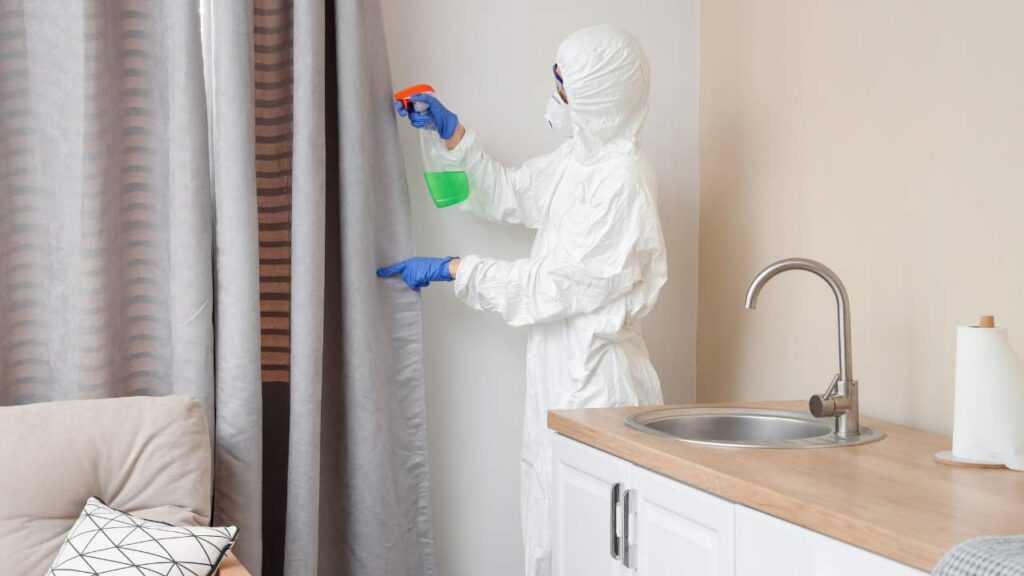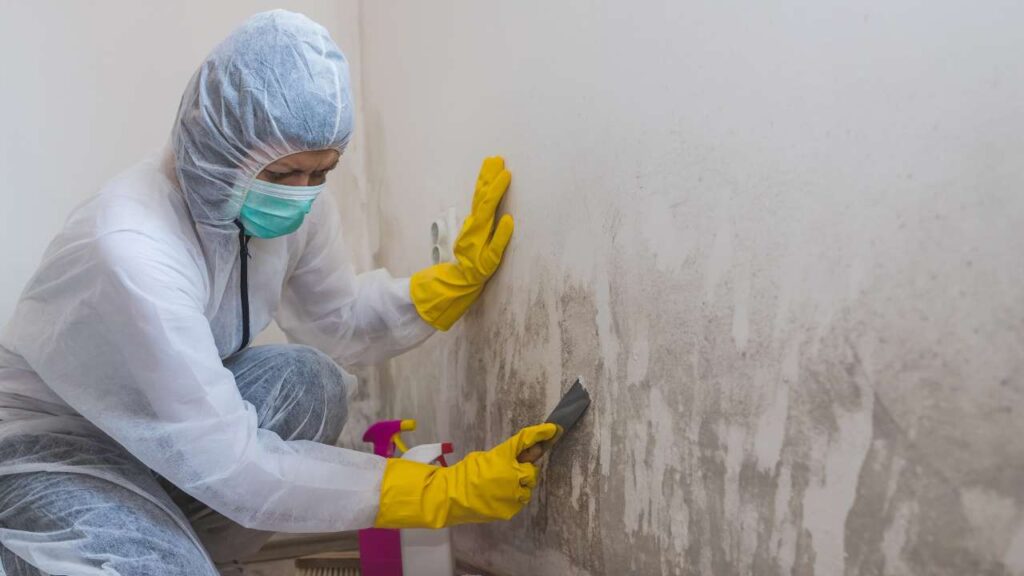Are you noticing damp spots, musty smells, or black patches forming on your walls or ceilings? Moisture and mould indoors are common problems in many Irish homes, especially in older buildings or during colder months.
These issues not only affect the appearance of your property but can also pose serious health risks and lead to long-term structural damage if left untreated. Understanding the root causes and how to detect early warning signs is key to keeping your living space healthy and mould-free.
In this blog, we’ll explore how to identify and address moisture and mould indoors and provide practical solutions to eliminate the problem and prevent it from returning.
What Is Mould and Why Does It Grow Indoors?
Mould is a type of fungus that exists naturally in the environment and reproduces through microscopic spores that travel through the air. In indoors, mould becomes a problem when these spores settle on damp surfaces such as walls, ceilings, wood, carpets, or furniture.
Once moisture and warmth are present, mould can spread quickly, appearing in colours like black, green, or white, and often gives off a strong musty smell. It not only affects the appearance of your home but can also pose serious health risks if left untreated.
The main reason mould grows indoors is excess moisture. This can come from a variety of sources including condensation, leaking pipes, poor insulation, or everyday activities like cooking, drying clothes indoors, or showering without adequate ventilation.
When moisture builds up and is not allowed to escape, it creates the perfect conditions for mould to grow. Homes without proper airflow or ventilation systems are especially at risk. Preventing mould involves identifying and controlling moisture levels early, which is the most effective way to stop it from taking hold inside your home.
How to Identify and Address Moisture and Mould Indoors?
Early detection and swift action are the keys to protecting your home from the harmful effects of dampness and mould. By knowing where to look and what to do, you can stop small problems from turning into serious damage.
Check Common Problem Areas First
Begin by inspecting areas most vulnerable to moisture, such as bathrooms, kitchens, basements, and attics. These spaces often experience high humidity and are frequently overlooked during routine cleaning. Regularly checking behind toilets, under sinks, around extractor fans, and near boiler systems can help you spot potential issues before they escalate.
Look for Physical Clues on Surfaces

Signs like dark stains, flaking paint, warped skirting boards, or bubbling wallpaper often signal the presence of moisture or mould. These clues may be subtle at first but will spread quickly if ignored. Pay special attention to corners, windowsills, and ceiling edges where condensation commonly settles.
Follow the Scent of Musty Odours
If you notice a damp, musty smell that lingers even after cleaning, there may be mould hiding out of sight. This odour is produced by microbial volatile organic compounds (MVOCs) released during mould growth. Track the smell to areas like wardrobes, behind large furniture, or inside airing cupboards to pinpoint hidden colonies.
Monitor Indoor Humidity Levels
Use a digital hygrometer to track humidity inside your home, especially in rooms with poor airflow. Aim to keep relative humidity between 40% and 60% to prevent moisture build-up. If you consistently see higher levels, consider using a dehumidifier or improving ventilation to bring conditions under control.
Take Immediate Action on Any Findings
When you identify a moisture or mould problem, address it without delay. For minor mould patches, clean the area using an anti-fungal cleaner and dry it thoroughly. If the problem returns or covers a larger area, professional intervention from a mould remediation specialist like VentSolve is strongly recommended for a safe and lasting solution.
How Can You Effectively Get Rid of Moisture and Mould Indoors?
Eliminating mould is not just about cleaning what’s visible. You need a long-term strategy that tackles both the root causes and the environmental conditions that allow mould to grow.
Improve Ventilation Throughout Your Home
Start by increasing natural and mechanical ventilation to reduce humidity levels. Use extractor fans in bathrooms and kitchens, keep internal doors open when possible, and crack open windows regularly even in colder months. Proper airflow helps prevent condensation and discourages mould from forming on cold surfaces.
Fix Any Leaks or Structural Issues

Undetected leaks in roofs, pipes, or around windows often feed mould growth behind walls or under floors. Inspect your plumbing, gutters, and roof tiles for signs of water ingress. Fixing these issues not only removes the source of moisture but also prevents future outbreaks in the same area.
Use Mould-Resistant Paints & Cleaning Products
In areas that have previously had mould, use anti-mould paints and fungicidal sprays after cleaning. These products contain agents that actively inhibit spore growth on surfaces. Always follow manufacturer guidelines, and wear gloves and a mask when applying treatments to protect yourself from exposure.
Control Indoor Humidity with Dehumidifiers
Dehumidifiers are a powerful tool for managing moisture levels, particularly in damp-prone rooms. Position them near problem areas such as basements or poorly ventilated bathrooms. By reducing excess moisture from the air, you make it harder for mould to take hold and easier to maintain safe indoor conditions.
Call a Professional Mould Remediation Specialist
If you are dealing with a large or recurring mould problem, or if mould is affecting your health, it is best to call a professional. Experts like VentSolve use safe removal techniques, industrial-grade equipment, and moisture mapping tools to eliminate mould at its source. This ensures a comprehensive clean and protects your home’s air quality long-term.
Conclusion
Identifying and addressing moisture and mould indoors involves a mix of early detection, proper ventilation, humidity control, and timely intervention. Common signs like musty odours, wall discolouration, and condensation should never be ignored. By understanding what causes mould and knowing how to act quickly, you can protect your home from long-term damage and ensure a healthier indoor environment for your family.
For professional mould removal and ventilation solutions in Ireland, contact VentSolve. Our team offers expert assessments, advanced treatment methods, and tailored ventilation systems to eliminate mould at its source. Get in touch with VentSolve today to create a cleaner, safer, and mould-free home.
Frequently Asked Questions
What are the health risks of indoor mould exposure?
Exposure to indoor mould can cause respiratory problems, nasal congestion, coughing, skin irritation, and worsen conditions like asthma or allergies. Long-term exposure to mould, especially black mould, can be particularly harmful for children, the elderly, and individuals with weakened immune systems.
How can I tell if my mould problem is serious?
If the mould covers a large area (more than one square metre), returns after cleaning, or is found behind walls or under flooring, it’s considered serious. Musty smells, visible discolouration, and persistent dampness are also signs that professional remediation may be necessary.
Can I clean mould myself or do I need a professional?
You can clean small areas of surface mould using anti-fungal cleaners, vinegar solutions, or mould sprays. However, if the mould keeps coming back, covers a large area, or is linked to structural dampness, it’s best to contact a professional like VentSolve for a safe and thorough treatment.
What’s the best way to prevent mould from returning?
The key to prevention is controlling moisture. Improve ventilation, fix leaks, use dehumidifiers, and keep indoor humidity levels below 60%. Regular maintenance and airflow management are essential to keeping your home mould-free over time.
What are the common causes of indoor moisture build-up?
Common causes include poor ventilation, leaking pipes, roof or window leaks, rising damp, and everyday activities like showering, cooking, or drying clothes indoors. Improper insulation and blocked vents can also contribute to excessive indoor moisture.
Can mould damage the structure of my home?
Yes, mould can gradually damage the structure of your home if left untreated. It can weaken plaster, rot wooden frames, and deteriorate insulation and drywall. Over time, this leads to costly repairs and may even affect the property’s resale value.


